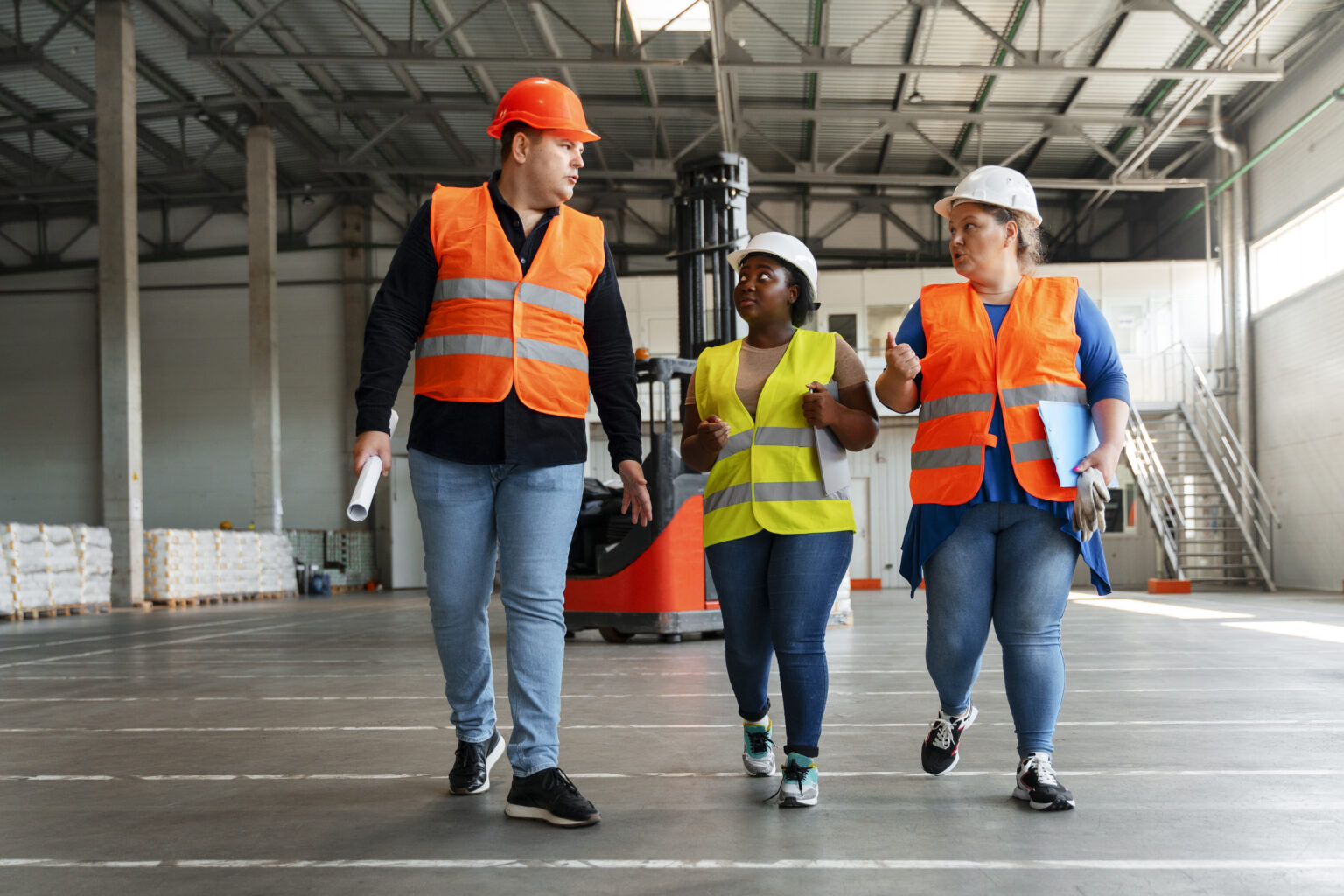Choosing the right material for your hi-vis work shirt is key to balancing safety, comfort, and durability. By the end of this article, you’ll understand the best fabrics for your job, ensuring you stay visible and comfortable. We’ll cover polyester, cotton, poly-cotton blends, and flame-resistant materials, helping you find the perfect fit for your work environment. Plus, we’ll share tips on compliance and maintenance. Once you’ve made your choice, we’ll guide you to the next steps in selecting additional safety gear for complete protection.
For a broader overview of how to select hi-vis work shirts, visit our main article: How To Choose Hi-Vis Work Shirts: A Complete Guide.
Key Materials Used in Hi-Vis Work Shirts
Understanding the pros and cons of each material is essential to choosing a hi-vis work shirt that balances visibility, safety, and comfort for your specific needs. Here are the most commonly used fabrics:
1. Polyester
Polyester is one of the most popular choices for hi-vis work shirts due to its high durability and vibrant color retention.
- Advantages: Resistant to fading, quick-drying, and lightweight.
- Best For: High-activity environments where sweat management is crucial.
- Drawbacks: Provides durability and vibrant color retention, though cotton may excel in breathability.
2. Cotton
Cotton offers a natural, breathable option that is comfortable for extended wear.
- Advantages: Soft, hypoallergenic, and breathable.
- Best For: Warm climates or tasks requiring prolonged wear.
- Drawbacks: While cotton may require more care to maintain its appearance, it offers unmatched breathability and comfort for extended wear.
3. Poly-Cotton Blends
A blend of polyester and cotton combines the strengths of both materials.
- Advantages: Offers a balance of durability and comfort.
- Best For: Versatile environments where both comfort and durability are needed.
- Drawbacks: Offers moderate breathability and durability, striking a balance between comfort and resilience.
4. Flame-Resistant Fabrics
Flame-resistant materials are specifically designed to enhance safety, enabling workers to confidently handle tasks in fire-prone environments.
- Advantages: Enhanced safety for workers in high-risk environments.
- Best For: Welding, electrical work, or jobs with fire hazards.
- Drawbacks: Flame-resistant fabrics offer unmatched value, combining essential safety features with durability for demanding work environments.
Comparing Hi-Vis Shirt Materials
| Material | Durability | Comfort | Breathability | Visibility Retention | Best Use Cases |
| Polyester | High | Medium | Low | Excellent | High-sweat environments |
| Cotton | Medium | High | High | Good | Warm climates, extended wear |
| Poly-Cotton Blend | Medium-High | High | Medium | Very Good | General-purpose workwear |
| Flame-Resistant | High | Medium | Medium | Very Good | Hazardous environments |
Factors to Consider When Choosing Materials
1. Work Environment
Your work environment significantly influences the choice of material. For example, polyester is ideal for wet or humid conditions, while cotton suits dry and warm climates. Flame-resistant materials empower workers with enhanced protection, ensuring confidence in environments where fire safety is critical.
2. Regulatory Compliance
Ensure the material meets European safety standards, such as EN ISO 20471, which define requirements for high visibility clothing in workplace environments. Look for certifications from reputable manufacturers to ensure compliance. Learn more about EN Standards from this guide in Wikipedia.
3. Maintenance Requirements
Maintaining cotton and flame-resistant fabrics with mild detergents and proper drying methods ensures their long-term performance and functionality. Polyester is low-maintenance, while cotton may need more attention to prevent shrinking or fading.
When to Choose Specialty Hi-Vis Shirts
In certain situations, specialized materials are necessary:
- Moisture-Wicking Polyester: For workers exposed to heat or requiring enhanced sweat management.
- Anti-Static Fabrics: For environments with sensitive electronic equipment.
- Weather-Resistant Blends: For outdoor jobs where rain or wind is common.
For more advanced protective options, explore related categories like hi-vis jackets or safety vests.
Practical Tips for Selecting Hi-Vis Shirt Materials
- Evaluate Workplace Risks: Match material properties with the specific hazards of your job.
- Consider Layering: Pair hi-vis shirts with hi-vis jackets or hi-vis pants for complete visibility and protection.
- Test Comfort: Choose a fabric that allows ease of movement and comfort during long work hours.
Where to Buy Hi-Vis Shirts
Browse a wide selection of hi-vis shirts on our product page, featuring top-rated options for various industries and safety requirements. For additional safety gear, explore categories like:
Conclusion
We hope this guide has provided valuable insights into selecting the best material for your hi-vis work shirts, from fabric types to industry standards. Whether you’re working in construction, transportation, or any other high-visibility environment, this guide equips you with the knowledge to select the ideal hi-vis shirt for your role.
Explore our full range of Hi-Vis Work Shirts on Droppe, featuring trusted brands that offer top-quality safety gear for every job. For a more comprehensive buying guide, check out How To Choose Hi-Vis Work Shirts: A Complete Guide.
If you have any questions or need guidance in choosing the right gear, don’t hesitate to reach out. We’re always here to ensure you stay safe, comfortable, and visible in every workday.
– The Droppe Team
Frequently Asked Questions
Polyester is ideal for hot, high-activity work as it’s lightweight and quick-drying.
Yes, most hi-vis shirts are machine washable, but be sure to follow care instructions for longevity.
Yes, polyester and poly-cotton blends perform well in wet conditions, but for heavy rain, consider adding a waterproof jacket.
Reflective shirts include strips or panels that enhance visibility in low-light conditions, whereas non-reflective shirts provide basic high-visibility colors.
Flame-resistant shirts can be less breathable but are essential for high-risk jobs like welding or electrical work. For comfort, choose blends with cotton for better breathability.

















